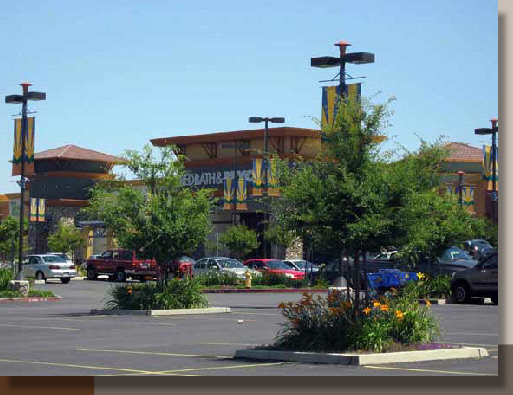


Garth Ruffner Landscape Architect


Planter sizes are often determined by agency requirements. Minor refinements, within the applicable regulations, can improve the long term prospects of landscape plants.


Narrow planters in vehicle overhang zones are rarely as successful as this one. Plants flat enough to allow cars to pull forward fully, without obstruction, are normally trampled almost immediately. Usually, pavement is a better option.

Planters over 7 feet in width are adequate for larger shade trees and can be irrigated with easily maintained spray systems.
Tractor Supply, Dixon
Rocklin 65 Office Complex
Planters between building entries and parking fields are very prone to damage from foot traffic. Moderate widths, at least 8’-10’, can prevent vulnerable planters from becoming trampled earth. Expanding these planters, at the expense of those in other locations, is a worth while trade-off.

Narrow planters (under 4’) are more likely to be damaged by pedestrians and poor maintenance practices. Where these planters have a protected location, adjacent to a building or in a more remote area, the odds of survival are better.


Folsom Corporate Center
A typical square 8’x8’ planter island, set between two compact stalls, is a very tight fit for a shade tree. Over-excavating the planter to a 24” depth and backfilling with fertile soil can give trees a reasonable chance for success.
Extruded curbing, which leaves a skirt of pavement beyond the back of curb, can reduce soil volumes excessively and leave pavement vulnerable to root damage. Cast-in-place curbing should be used where possible in these small planters.

Planter Sizes
Morada Ranch Center
Granite Bay Pavilions